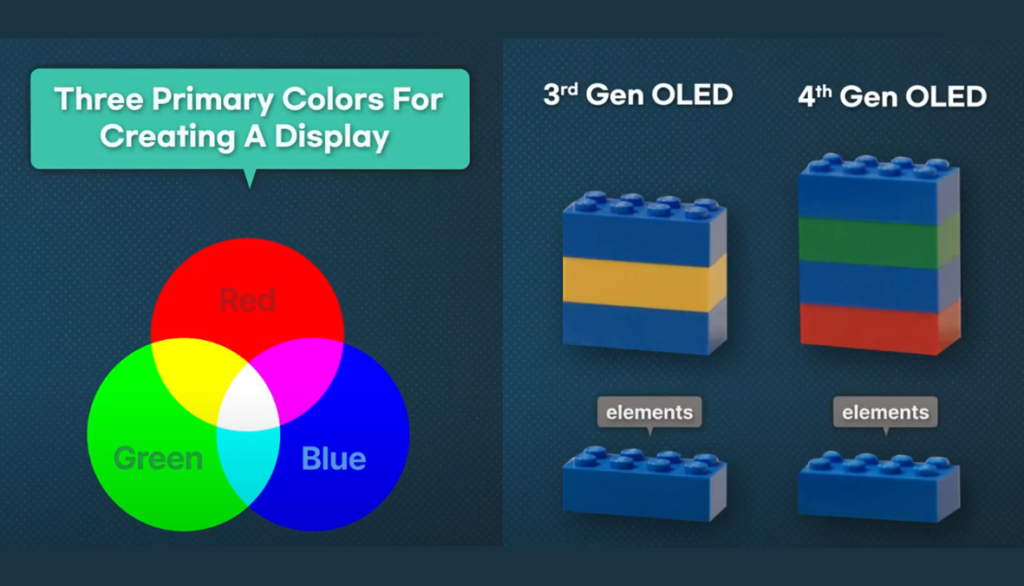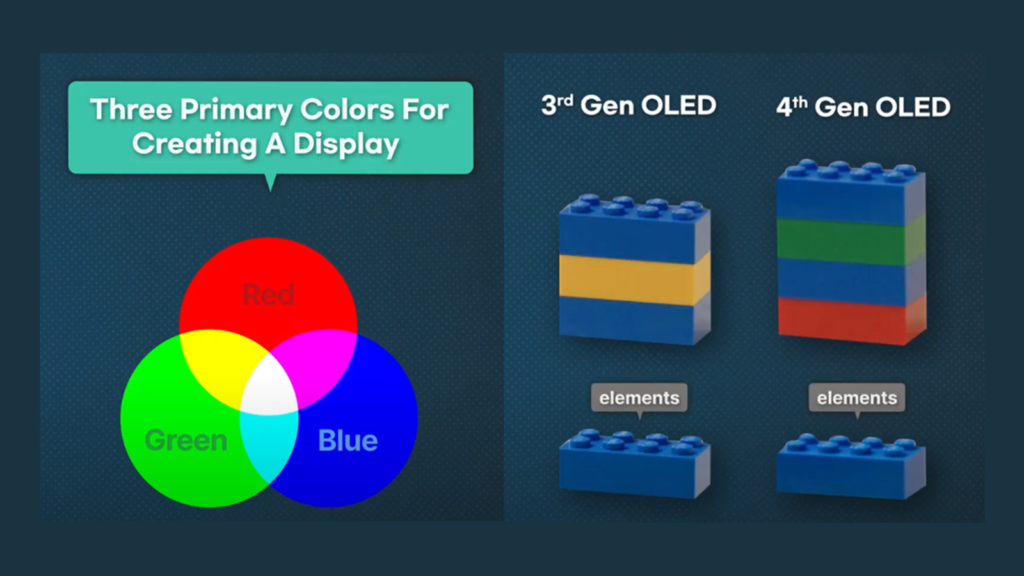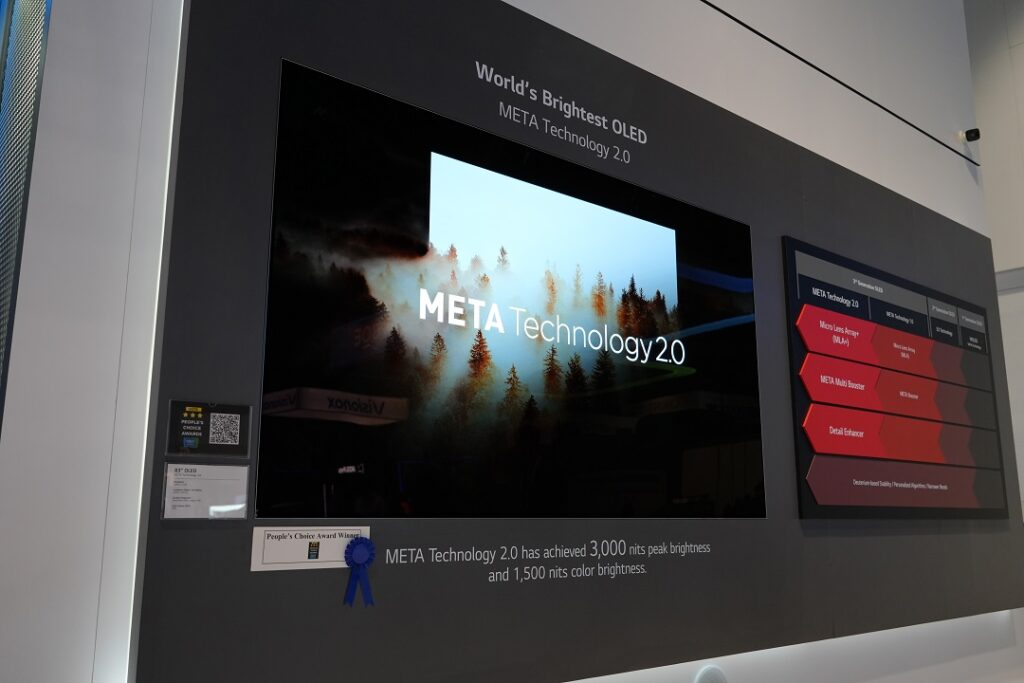
As the primary colors of light are red, green, and blue, the cells in our eyes responsible for color perception respond to these three colors. So, the images we see on displays such as TV and monitor panels are composed of RGB (red, green, blue) elements. However, the way they are implemented determines the performance of a display panel.
Until just recently, no display featured all three primary colors of light independently. But that changed when LG Display unveiled its 4th generation OLED. Let’s explore the only panel to capture all three colors of light in this way.
LG Display’s 4th generation OLED achieves a screen brightness of 4,000 nits, setting a new industry standard. This is a 33% improvement from the 3,000 nits produced by the company’s 3rd generation OLED released.

The core innovation of 4th generation OLED is Primary RGB Tandem technology. In LG Display’s 3rd generation OLEDs, the light sources for colors were structured in three layers: two blue and one yellow-green. The yellow-green layer was used to express both red and green, but this approach limited light intensity.
4th generation OLED has replaced that yellow-green layer with independent red and green layers, making up a total of four layers when added to the two blue ones and allowing for more vivid and pure color expression. The key innovation of the 4th generation OLED lies in independent light sources for each color, with their own wavelength and thickness. Stacking them in this manner is exceptionally challenging, which is why no other company had achieved it until now.
While LG Display’s 3rd generation OLED only required matching the wavelengths of yellow-green and blue, 4th generation OLED must align the wavelengths of red, green, and blue. It makes the technology more complex but enables that 33% increase in maximum brightness and a 40% improvement in color brightness compared to the previous generation.
Currently, premium TV panels can be divided between OLED and Mini LED technologies. When we compare these two, we also need to consider black expression. Despite being more price competitive, Mini LED offers a lower contrast ratio than OLED because the latter features a self-emissive structure in which each pixel emits and turns off light individually. Other panel technologies such as Mini LED rely on backlights that need to be blocked by shutters to create black. As fundamental differences widen the technology gap between OLED and Mini LED, OLED panels can be seen to be outperforming their counterparts in terms of picture quality.
With the launch of its 4th generation OLED, LG Display is expected to strengthen its position in the premium TV market. According to Sung-joon Bae, Head of the Large Display Panel Development Division at LG Display, “We will continue to innovate customer value by improving both performance and production efficiency to deliver enhanced panels at competitive prices.”
Stay tuned for more advancements as LG Display’s OLED technology continues to evolve toward the pinnacle of high-definition displays!









